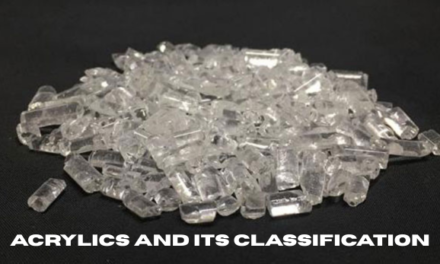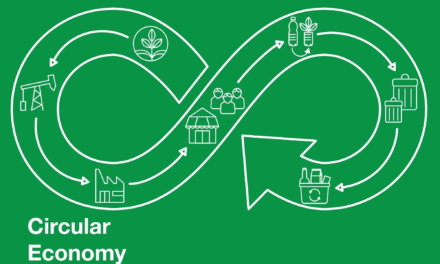The large-scale production of basic chemicals has significant environmental impacts, as it involves energy-intensive processes, large quantities of raw materials, and the generation of emissions and waste. Below are the major environmental concerns associated with the production of basic chemicals, along with potential mitigation strategies:
1. Greenhouse Gas Emissions
- Source: Processes like steam cracking, ammonia synthesis (Haber-Bosch process), and chlor-alkali production are energy-intensive and rely heavily on fossil fuels.
- Impact:
- High CO₂ emissions contribute to global warming and climate change.
- Methane leakage from natural gas-based feedstocks exacerbates the greenhouse effect.
- Example: Ammonia production accounts for about 1.8% of global CO₂ emissions.
- Mitigation:
- Transition to renewable energy sources for chemical processes.
- Develop carbon capture, utilization, and storage (CCUS) technologies.
2. Air Pollution
- Source: Emission of nitrogen oxides (NOₓ), sulfur oxides (SOₓ), and volatile organic compounds (VOCs) from chemical plants.
- Impact:
- NOₓ and SOₓ contribute to acid rain, harming ecosystems and infrastructure.
- VOCs lead to the formation of ground-level ozone, causing respiratory issues.
- Mitigation:
- Use advanced scrubbers and catalytic converters to reduce air pollutants.
- Adopt cleaner combustion technologies and emission control systems.
3. Water Pollution
- Source: Discharge of untreated effluents containing toxic substances, heavy metals, and process chemicals.
- Impact:
- Contamination of water bodies harms aquatic ecosystems and affects human health.
- Excess nutrients from fertilizers lead to eutrophication, causing dead zones in water bodies.
- Mitigation:
- Implement stringent wastewater treatment standards.
- Adopt zero-liquid discharge (ZLD) systems to recycle and reuse water.
4. Resource Depletion
- Source: Dependence on non-renewable resources such as crude oil, natural gas, and minerals.
- Impact:
- Over extraction of raw materials can lead to ecosystem degradation.
- Depletion of finite resources creates long-term sustainability concerns.
- Mitigation:
- Shift to renewable feedstocks like biomass, CO₂, and waste-derived materials.
- Promote circular economy practices, such as recycling and reusing by-products.
5. Hazardous Waste Generation
- Source: By-products and residuals from chemical synthesis, including solid waste and toxic sludge.
- Impact:
- Improper disposal can lead to soil and groundwater contamination.
- Accumulation of hazardous materials poses risks to human and environmental health.
- Mitigation:
- Use waste-to-energy technologies to convert by-products into usable forms.
- Develop green chemistry processes to minimize hazardous waste.
6. Energy Consumption
- Source: High energy demand for cracking, distillation, and electrolysis.
- Impact:
- Reliance on fossil fuels increases carbon emissions.
- Energy-intensive processes contribute to overall environmental degradation.
- Mitigation:
- Adopt energy-efficient technologies, such as heat recovery systems.
- Transition to renewable energy sources like solar, wind, and hydropower.
7. Land Use and Habitat Destruction
- Source: Extraction of raw materials, construction of large chemical plants, and waste disposal.
- Impact:
- Loss of biodiversity and disruption of natural habitats.
- Soil erosion and degradation due to mining activities.
- Mitigation:
- Implement sustainable land use practices and restore degraded areas.
- Minimize plant footprints through process intensification and modular facilities.
8. Toxic Exposure
- Source: Accidental releases of toxic chemicals, such as chlorine, ammonia, and sulfur dioxide.
- Impact:
- Acute and chronic health issues for workers and nearby communities.
- Long-term contamination of air, water, and soil.
- Mitigation:
- Strengthen safety protocols and emergency response systems.
- Use safer chemical alternatives and inherently safer design principles.
9. Plastic Pollution
- Source: Basic chemicals like ethylene and propylene are precursors for plastics.
- Impact:
- Mismanaged plastic waste leads to environmental pollution and harm to wildlife.
- Microplastics accumulate in ecosystems, entering the food chain.
- Mitigation:
- Develop biodegradable plastics and promote recycling technologies.
- Implement policies to reduce single-use plastics and encourage reuse.
10. Climate and Ecosystem Disruption
- Source: Large-scale industrial operations and emissions.
- Impact:
- Disruption of local microclimates and ecosystems near chemical plants.
- Contribution to global climate change exacerbates environmental vulnerabilities.
- Mitigation:
- Invest in nature-based solutions, such as afforestation and wetland restoration.
- Align production practices with global climate targets, such as the Paris Agreement.
Conclusion
The environmental impact of large-scale essential chemical production is profound but manageable with the adoption of innovative technologies, sustainable practices, and stringent regulations. By transitioning to green chemistry, renewable energy, and circular economy models, the industry can significantly reduce its environmental footprint and contribute to a sustainable future.
Hashtags
#EnvironmentalImpact #ChemicalPollution #SustainableChemicals #EcoImpact #IndustrialEmissions #ClimateChange #CarbonEmissions #ClimateImpact #CarbonFootprint #IndustrialCarbon #LowCarbonFuture #DecarbonizingIndustry #ChemicalWaste #IndustrialWaste #AirAndWaterPollution #ToxicEmissions #WasteReduction #GreenChemistry #SustainableProduction #EcoFriendlyIndustry #SustainableDevelopment #CircularEconomy #EnvironmentalRegulations #ESGGoals #CleanIndustry #EcoPolicy #GlobalSustainability #SustainableSolutions #ChemicalInnovation #GreenTech #CleanManufacturing #EcoRevolution #SaveThePlanet #EnvironmentalAwareness #IndustryCollaboration #ResponsibleChemistry #EcoFuture

















